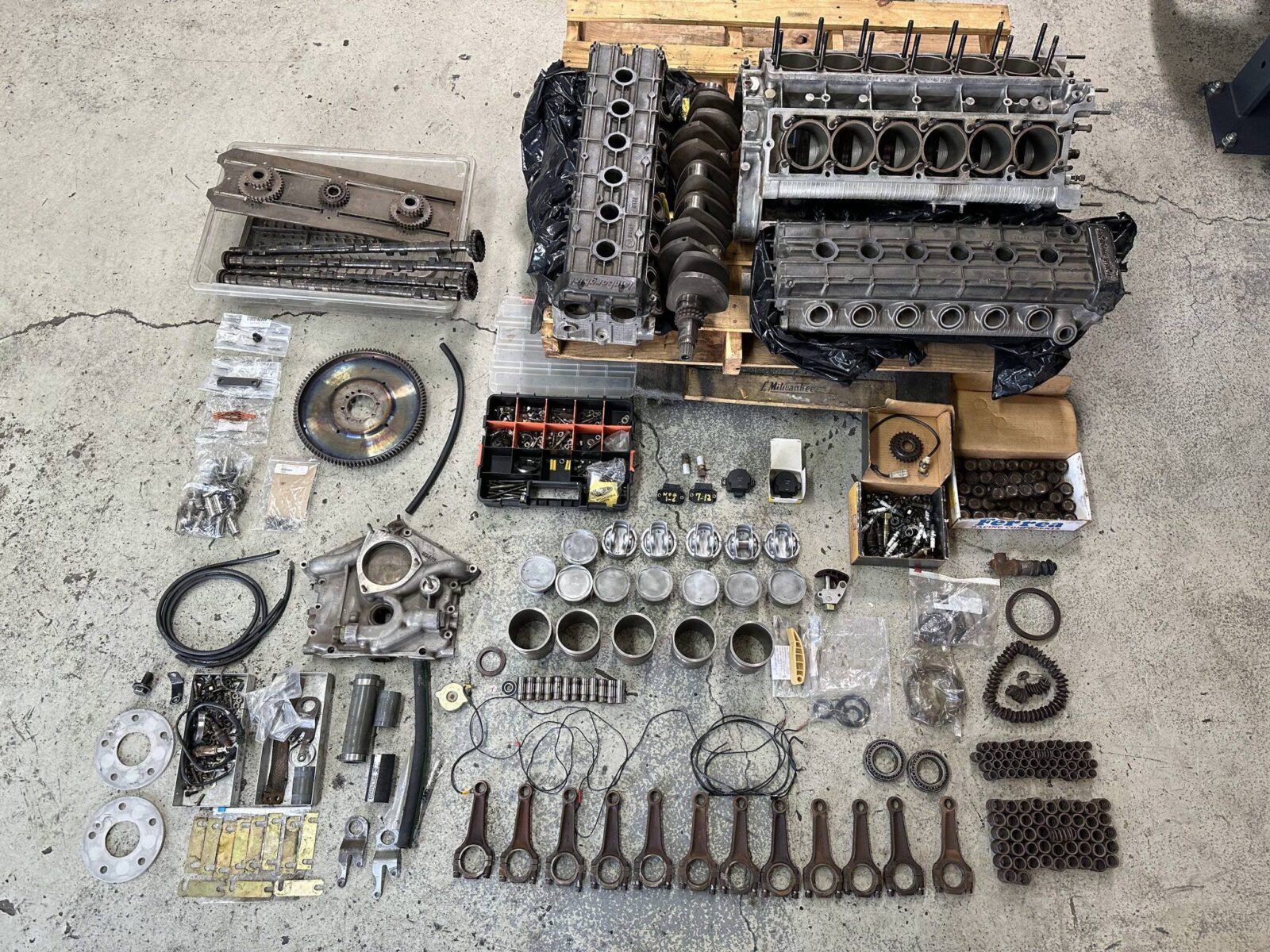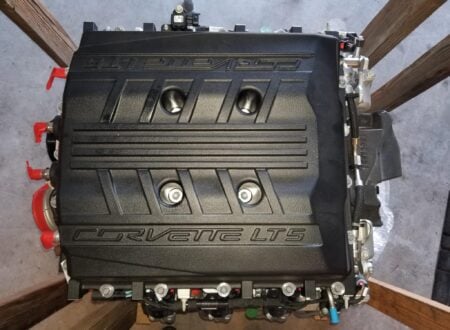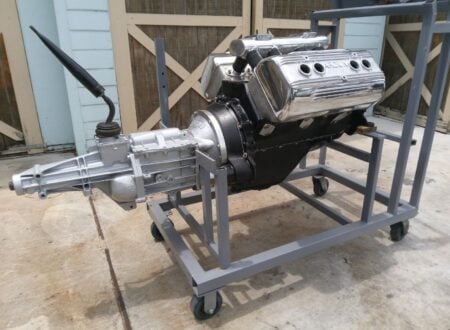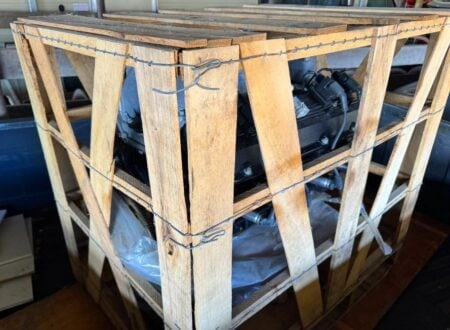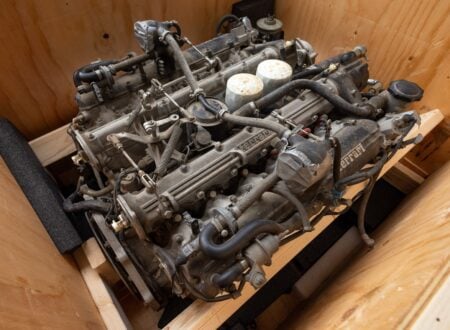This is a 5.7 liter Lamborghini Diablo V12, it’s currently completely disassembled as you can see in the images above and below, though the rebuild process was started, with replacement cylinder sleeves already fitted.
It’s clear that while all the major parts do seem to be accounted for, this engine will need significant work before the reassembly process takes place. Parts will have to be examined to ensure they’re within tolerances, replaced if not, and reconditioned before use.
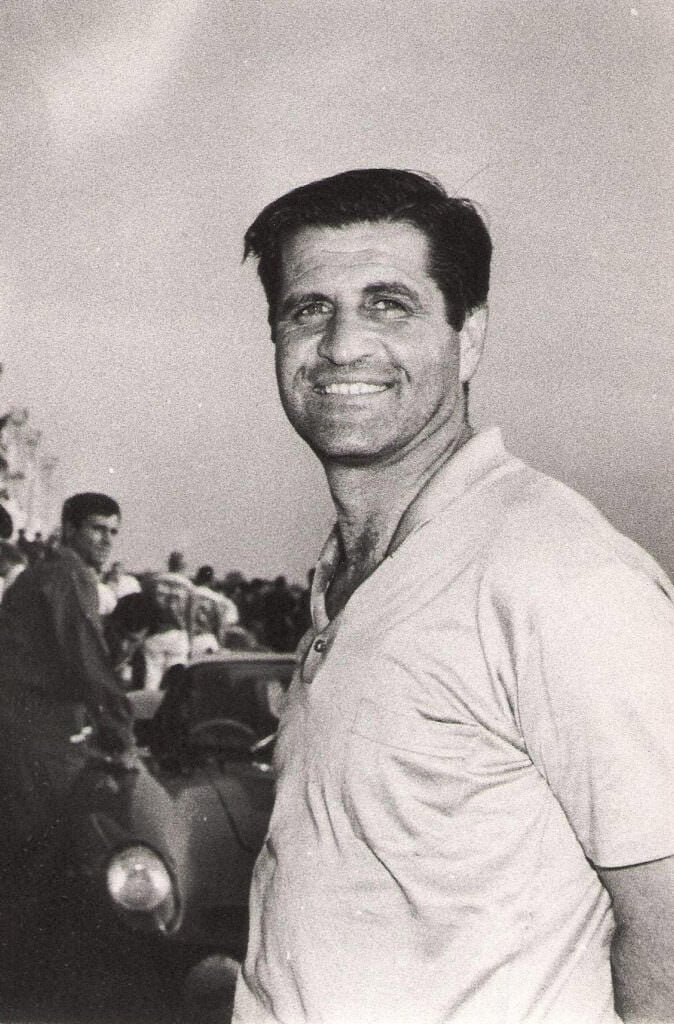

The Automobili Lamborghini Origin Story
The Lamborghini V12 should probably be called the Bizzarrini V12, as it would be engineer Giotto Bizzarrini who would actually design the engine – an engine that would power Lamborghini’s supercars for the better part of 50 years. In the same way that Ferrari’s most famous V12 is commonly referred to as the Colombo V12, after its creator Gioacchino Colombo.
It would be the Colombo V12 that the Lamborghini V12 was actually designed to compete with, in a very direct manner.
The story that led to the creation of the Lamborghini V12 is one of the most famous in the history of the automobile. The short version is that Italian tractor manufacturing magnate Ferruccio Lamborghini found himself embroiled in an argument with Enzo Ferrari one day in the early 1960s over yet another clutch failure on one of his personally-owned Ferraris.
When bringing this problem to the attention of Enzo, and suggesting some engineering improvements that would resolve it, he was told in no uncertain terms to leave cars to Ferrari and just concentrate on his tractors. This infuriated Ferruccio, and it would become the origin story of Automobili Lamborghini – a car company that would become Ferrari’s greatest rival.
The Lamborghini V12
The first road car developed at Automobili Lamborghini was the Lamborghini 350GT that debuted in 1964, it would be powered by an all-new V12 engine that had been developed a year earlier in 1963 by lead engineer Giotto Bizzarrini.
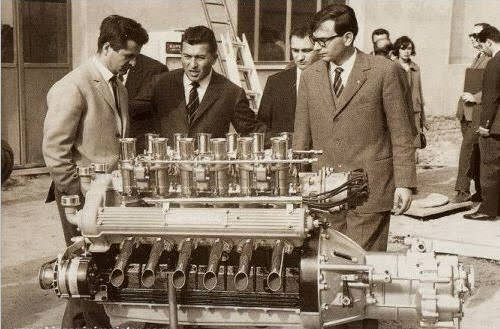

This would be far from Bizzarrini’s first rodeo. His career was already long and impressive at this point, having graduating with an engineering degree from the University of Pisa in 1953, and going straight to work at Alfa Romeo as a test driver. He distinguished himself quickly and by the late 1950s he had been head hunted by Ferrari as their new sports car development chief.
In this role he would lead the development teams of many of the most impressive Ferraris of the era, including the Ferrari 250 GTO. After a major disagreement with Enzo he would leave Ferrari in 1961 and start his own company, Società Autostar, which he would later rename Bizzarrini, before releasing the remarkable Bizzarrini 5300 GT.
Rumor has it that when he was working for Lamborghini developing the firm’s first V12, he was offered a bonus for every horsepower the engine could produce over the then-current Colombo V12 being used by Ferrari.
Production V12 road going Ferraris at this time, like the Ferrari 250 GT Lusso, were producing approximately 237 bhp which was considered ample by most. The new V12 developed by Bizzarrini was capable of 370 bhp, with Bizzarrini insisting he could tune it to reliably turn out 400 bhp.
That offer of a bonus certainly seems to have had the desired effect, though by the time the engine was tuned for regular road use it was, reliably, still producing 280 bhp.
The Lamborghini 350GT made its first appearance at the 1964 Geneva Motor Show and was soon followed by a slew of other models including the 400 GT, Miura, Espada, Countach, LM002, Diablo, and Murciélago – all of which were powered by versions of the same Bizzarrini-designed V12.
The Lamborghini V12 Shown Here
The engine you see here is one of the later examples of the Lamborghini V12 that was used in the Lamborghini Diablo. As originally fitted to the Diablo it would have been capable of 485 bhp and 428 lb ft of torque.
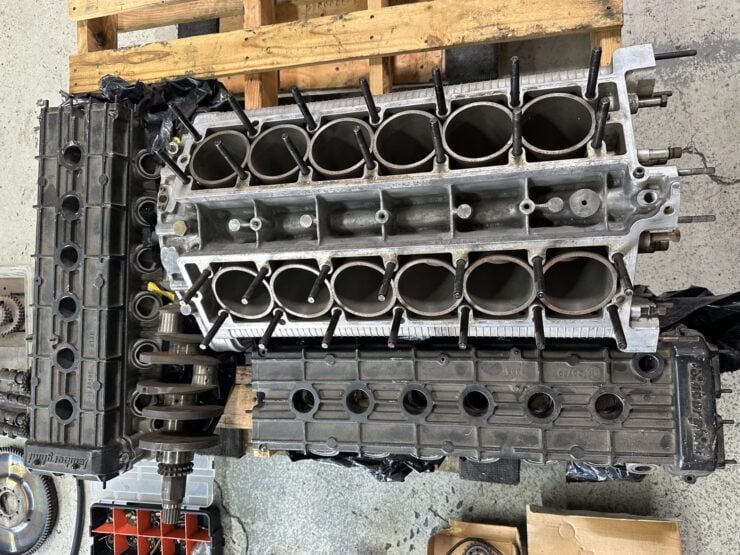

This particular Diablo V12 was brought by the current owner, and now seller, earlier this year in its current disassembled state. As noted above it has had replacement sleeves fitted as well as cylinder head mounting studs, and it comes with the crankshaft, pistons, connecting rods, camshafts, valve covers, block, heads, and more.
If you’d like to read more about this engine or register to bid you can visit the listing on Bring a Trailer here. It’s being offered for sale out of West Los Angeles, California with no reserve.

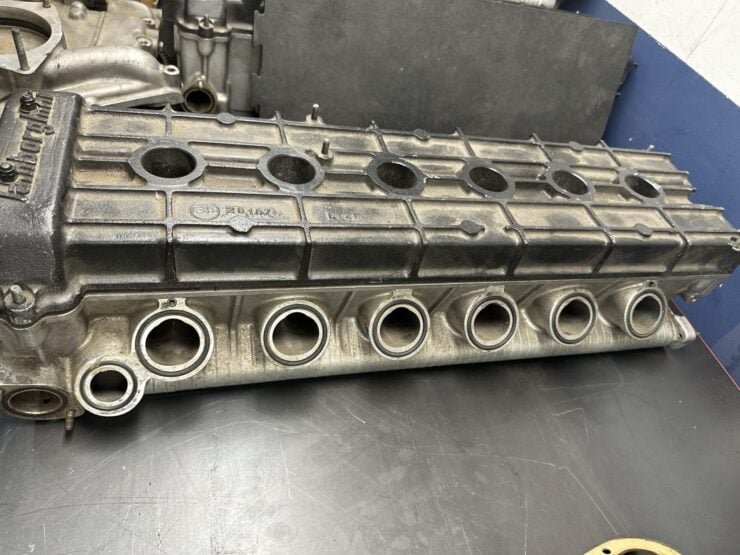
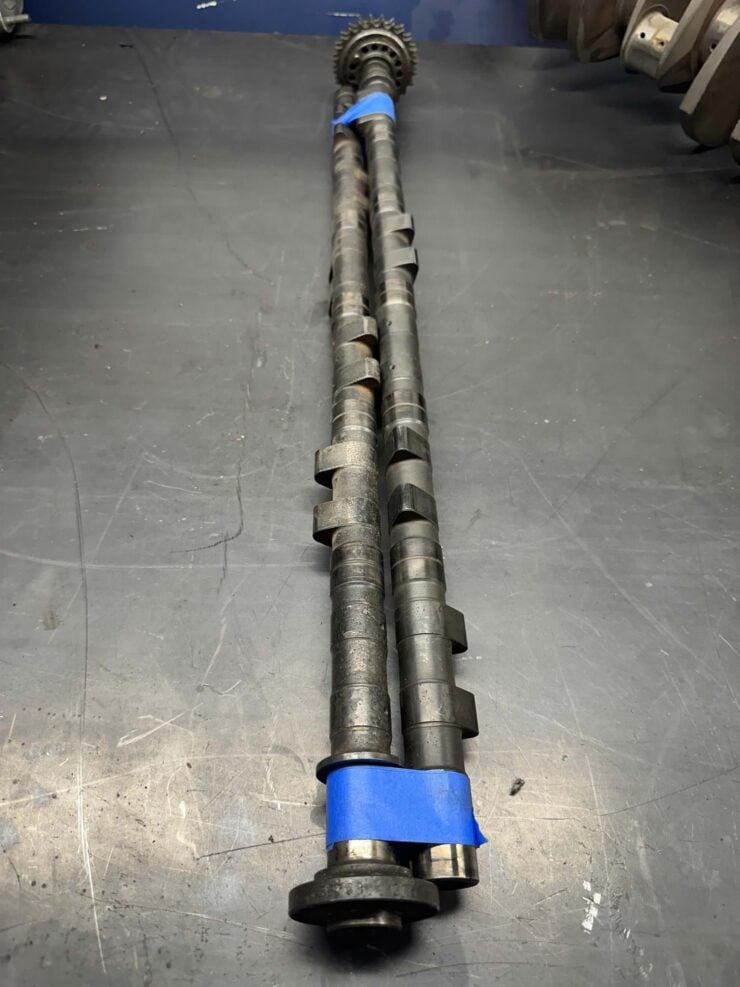
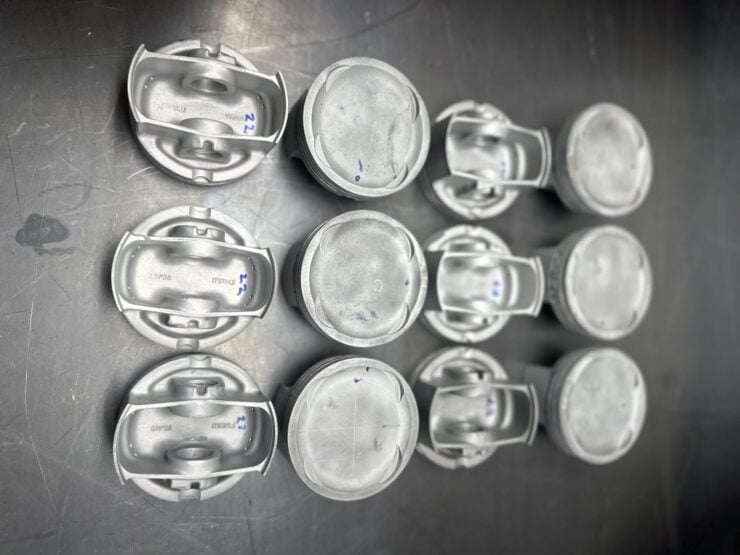
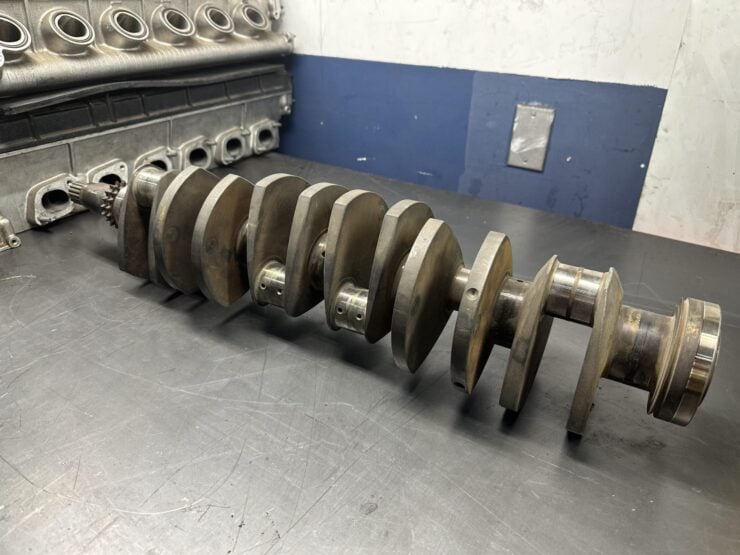
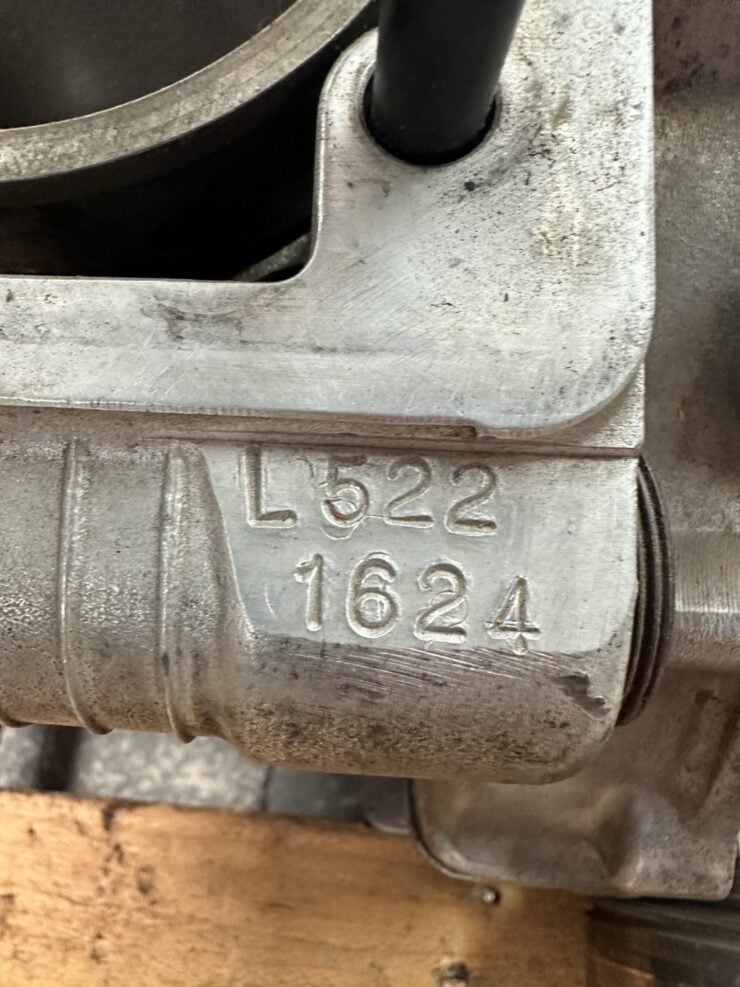
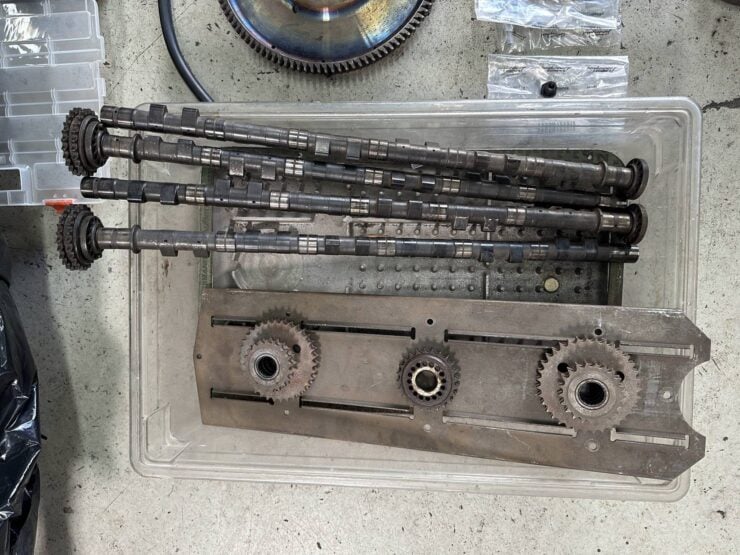
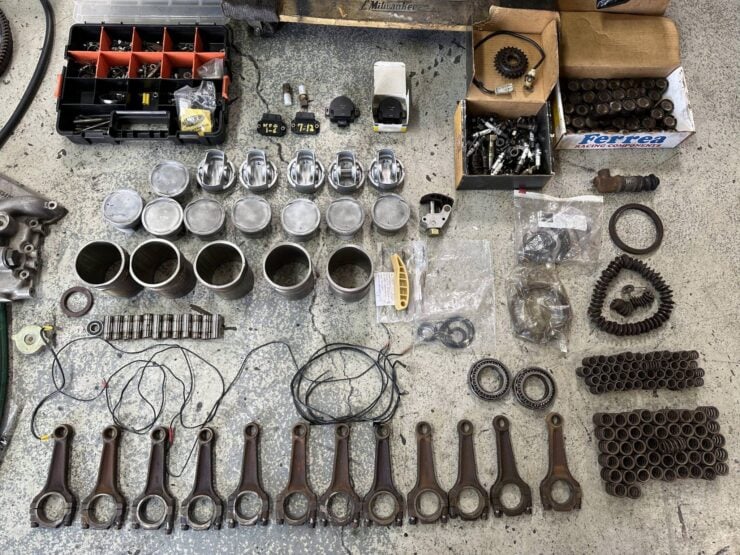
Images courtesy of Bring a Trailer

